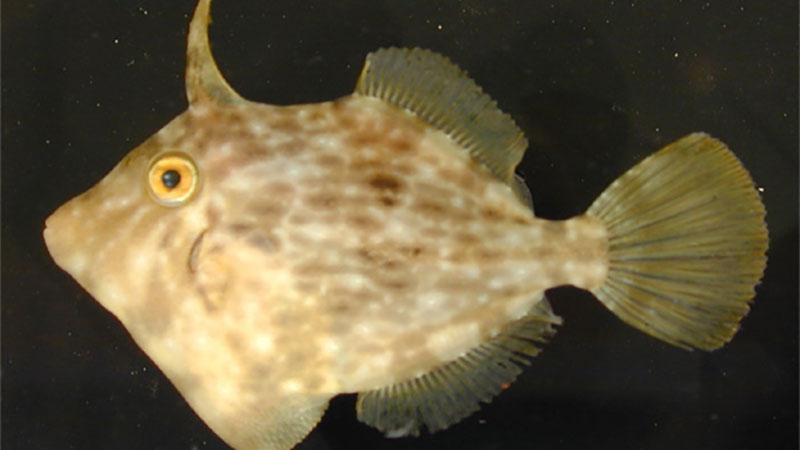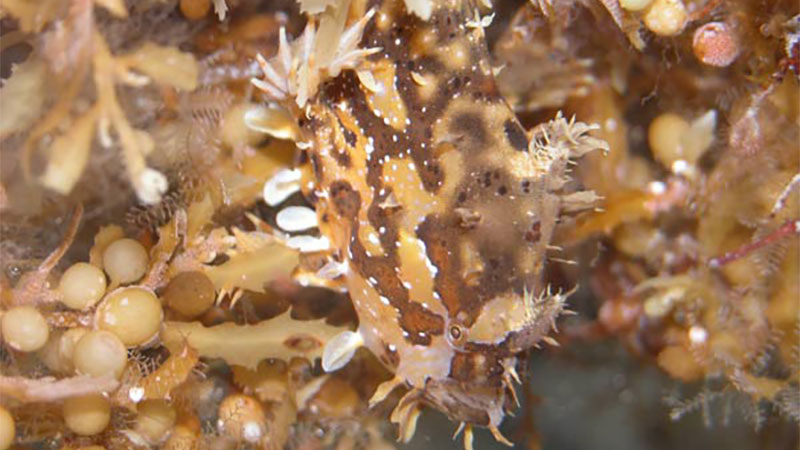What is Sargassum?
Sargassum is a genus of large brown seaweed (a type of algae) that floats in island-like masses and never attaches to the seafloor.

Smaller fishes, such as filefishes and triggerfishes, reside in and among brown Sargassum. Image courtesy of the Life on the Edge Exploration.Download image (jpg, 116 KB).
The brown algae Sargassum is abundant in the ocean. Upon close inspection, it is easy to see the many leafy appendages, branches, and round, berry-like structures that make up the plant. These “berries” are actually gas-filled structures, called pneumatocysts, which are filled mostly with oxygen. Pneumatocysts add buoyancy to the plant structure and allow it to float on the surface.
Floating clumps, patches, large rafts, and weedlines of Sargassum can be found in the upper parts of the water column. Sometimes these rafts can stretch for miles across the ocean. This floating habitat can provide food, refuge, and breeding grounds for an array of animals such as fishes, sea turtles, marine birds, crabs, shrimp, and more. Some animals, like the sargassum fish (in the frogfish family), live their whole lives only in this habitat. Sargassum serves as a primary nursery area for a variety of commercially important fishes such as mahi mahi, jacks, and amberjacks.
When Sargassum loses its buoyancy, it sinks to the seafloor, providing energy in the form of carbon to fishes and invertebrates in the deep sea, thus serving as a potentially important addition to deep-sea food webs.


